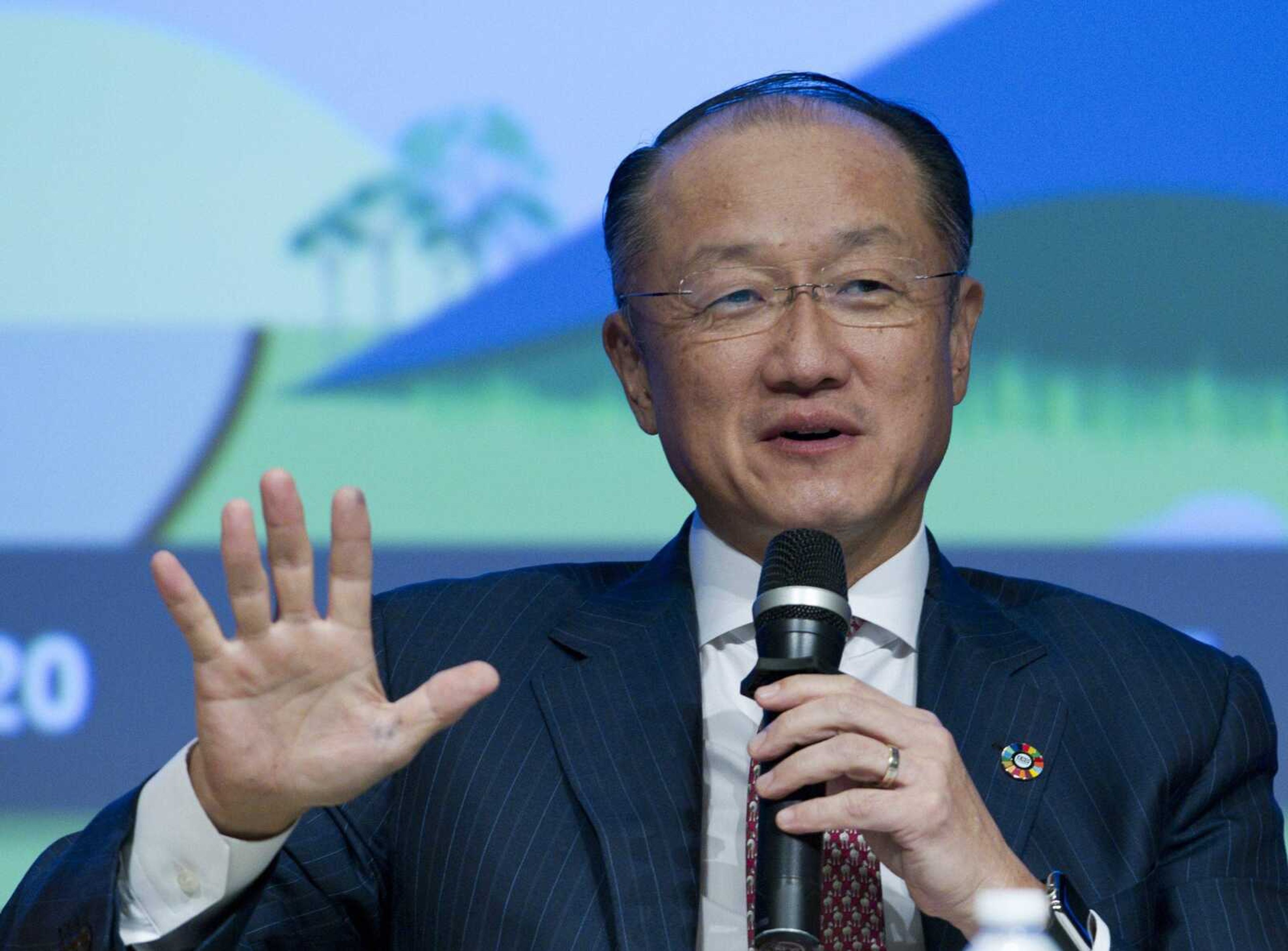World Bank forecasting brighter prospects for 2017
WASHINGTON -- The World Bank is forecasting the global economy will accelerate slightly in 2017 after turning in the worst performance last year since the 2008 financial crisis. The 189-nation lending agency said Tuesday global growth should expand at a 2.7 percent annual rate this year. That is down from the bank's June forecast for 2.8 percent growth this year, but it's better than last year's 2.3 percent growth...
WASHINGTON -- The World Bank is forecasting the global economy will accelerate slightly in 2017 after turning in the worst performance last year since the 2008 financial crisis.
The 189-nation lending agency said Tuesday global growth should expand at a 2.7 percent annual rate this year. That is down from the bank's June forecast for 2.8 percent growth this year, but it's better than last year's 2.3 percent growth.
The global economy faced headwinds last year, from economic troubles in China to bouts of financial-market turmoil.
"We are encouraged to see stronger economic prospects on the horizon," said World Bank president Jim Yong Kim.
The World Bank's Global Economic Prospects report projects 2.2 percent growth in the United States, up from an estimated 1.6 percent in 2016. The U.S. forecast for 2016 is lower than the June projection of 1.9 percent growth, while the outlook for this year is unchanged.
In the years since the 2008 financial crisis, the World Bank and the International Monetary Fund repeatedly have proven too optimistic in their forecasts.
U.S. growth in the first half of last year was anemic as American companies struggled with the effect of a strong dollar, which cut into exports. A big fall in oil prices also triggered a reduction in investment spending by energy companies.
Globally, many developing countries struggled with a fall in commodity prices, which reduced the income they received from those goods.
The World Bank said commodity exporters in emerging markets and other developing economies should see their economies expand by 2.1 percent in 2017 after a barely discernible 0.3 percent gain in 2016.
The new forecast expects commodity prices to recover gradually and Russia and Brazil to resume growing after recessions last year.
Among advanced economies, the World Bank said the United States should benefit from a rebound in manufacturing and investment after last year's slowdown.
The World Bank said there is a potential for an even better performance in the United States if the stimulus program proposed by President-elect Donald Trump is enacted. Trump pledged during the campaign to cut taxes, roll back burdensome regulations and boost infrastructure spending.
The World Bank said the gains realized from stronger U.S. growth could help boost global prospects. It cautioned, however, proposals to impose higher tariffs on goods from such countries as China and Mexico represented a threat to growth if they sparked trade wars.
"Because of the outsize role the United States plays in the world economy, changes in policy direction may have global ripple effects," said World Bank economist Ayhan Kose. "More expansionary U.S. fiscal policies could lead to stronger growth in the United States and abroad ... but changes to trade or other policies could offset those gains."
The World Bank outlook said commodity-importing emerging-market and developing countries should grow by 5.6 percent this year, down slightly from 5.7 percent last year.
In this group, China is projected to continue an orderly slowdown in growth to a 6.5 percent rate, compared to an estimated 6.7 percent last year.
The World Bank said growth prospects for this group of countries were being dampened by tepid international trade growth, subdued investment gains and weak productivity growth.
Overall global growth of 2.7 percent this year would match the gains seen in 2014 and 2015.
Connect with the Southeast Missourian Newsroom:
For corrections to this story or other insights for the editor, click here. To submit a letter to the editor, click here. To learn about the Southeast Missourian’s AI Policy, click here.









